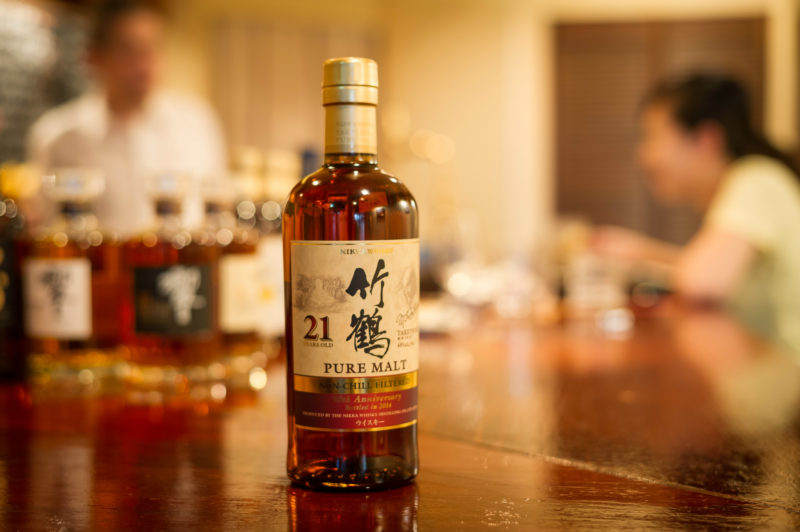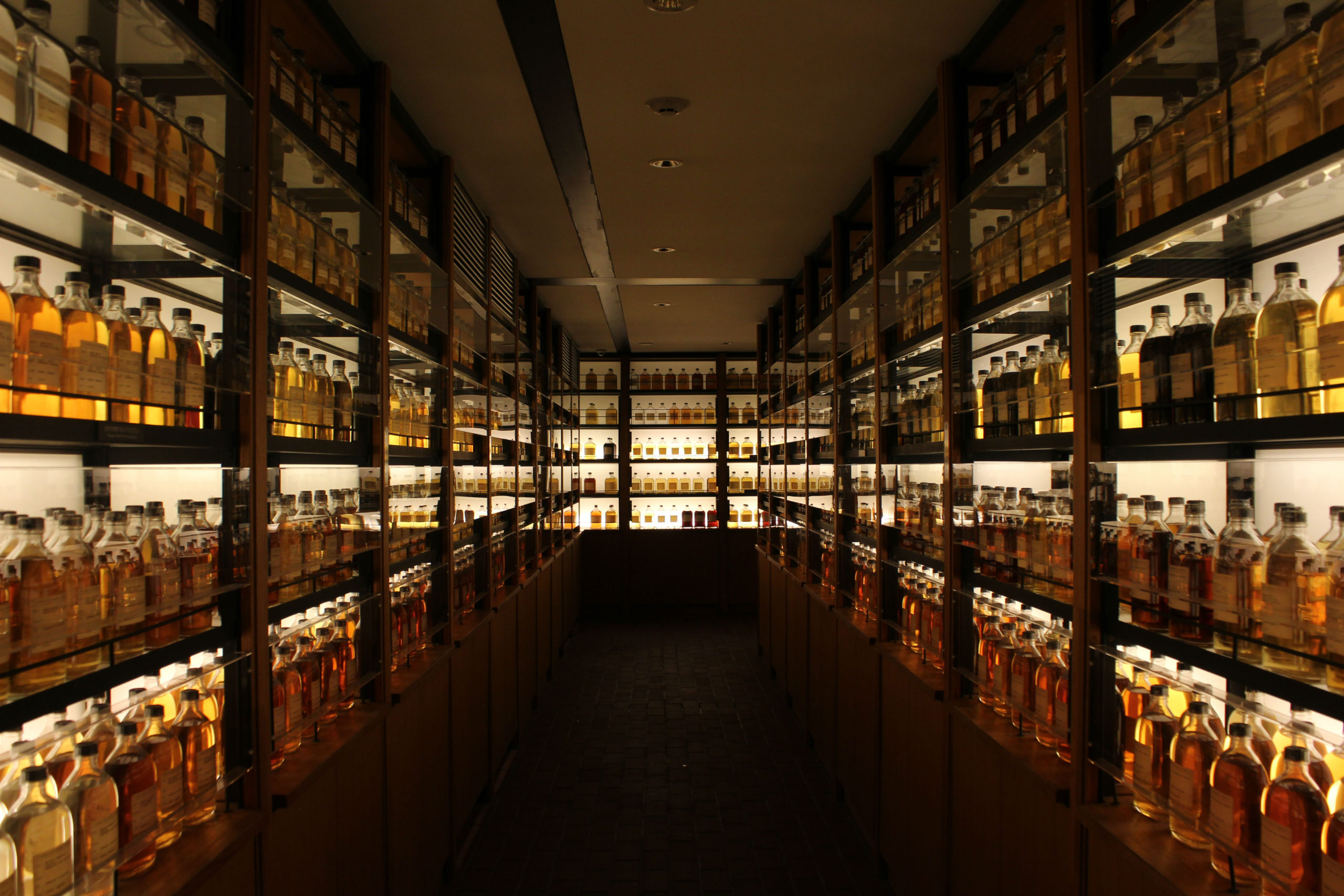2020 is now well underway and the start of the year has seen the usual projections, analysis and “What’s To Come In [insert year]” articles (we even have one of our own). The general consensus is that Japanese whisky is continuing to grow and that this will be a huge year for the industry, as the eyes of the world turn to Tokyo in July for one of the biggest sporting events in the world, and the Japanese Whisky Research Centre looks to tighten industry regulations with the creation of a Japanese Whisky Association.
One thing that has been notably missing from much of the year’s commentary thus far, is a little bit of data to go along with it. That’s not because writers are intentionally omitting information, it’s much simpler than that – facts and figures relating to Japanese whisky are quite difficult to come by.
Fortunately for myself, working for the world’s largest online retailer of Japanese whisky, I have a good helping of sales figures, data and distillery growth percentages at my fingertips.
Today, I’ll be sharing some of this with you in a bid to paint a better picture of exactly what the on-going whisky shortage has meant for the country’s distilleries (big and small) and what Japanese whisky fans around the world are buying, while providing a little more insight into what to expect in the year ahead.
*It’s worth remembering that this data is our own and therefore may not represent the whisky industry as a whole, but with it we can give ourselves a better idea of what’s going on. All percentages in this article are of total unique purchases (ie % of total number of bottles sold).*
The Effects of The Whisky Shortage on Nikka and Suntory
Japan’s “Big Two” are the ones that have really felt the brunt of the whisky shortage. It was their whiskies that exploded onto the world market in the early 2000s and it’s their whiskies that have been in such high demand with customers around the world ever since.
In previous posts we’ve discussed the fact that these two drinks giants have now set out plans that will see the shortage ease by 2025, with the possibility that some of our discontinued favourites, ie Hibiki 17, will start reappearing by 2030, but what of the here and now? How is the shortage impacting sales of Nikka and Suntory whisky?
2018 saw our total sales for the year dominated by Suntory, with Nikka taking up a much smaller, but significant, portion of all bottles sold.
This mainly owed to the popularity of Hibiki and Yamazaki whisky, two firm favourites of the Japanese whisky drinker. These two brands alone made up an impressive 37.91% of total unique purchases for the year, with other Suntory whiskies contributing 8.41%, totalling 46.32%.
Nikka on the other hand held just 9.35% of our market share, with the recently discontinued Taketsuru Pure Malt range, the hugely popular Nikka From The Barrel and the Nikka 12 Year Old, making up the vast majority of this figure.
When we compare this to 2019, we see a slight decline in the percentage of purchases made up by Suntory whiskies – it comes in at just 45.93% of total unique purchases. Of this, Hibiki made a huge jump to 25.28% of total purchases, as opposed to just 15.32% the previous year, while Yamazaki whisky sales dropped from 16.05% of our market share down to 14.94%.
Nikka sales also slipped, now contributing just 8.81%.
In our opinion, Nikka and Suntory sales fell due to the lack of exciting new age-statement expressions on offer, combined with a growing interest in what else is out there. Naturally, fans are now looking to broaden their horizons and find out what other Japanese distilleries have on offer and this surely played its role, though we’ll get on to this a bit later.
Interestingly, the drastic shift in which Suntory, and indeed Nikka, products people are buying can be put down to “The Discontinuation Effect”.
The Discontinuation Effect

From our data, the effect caused by bottles being discontinued is clear to see. It has been well-documented that both Suntory and Nikka have had to remove several expressions from production lines due to a lack of the ageing stock needed to create them. The Hibiki 12, Hibiki 17, Hakushu 12, Nikka Coffey Malt, Nikka Coffey Grain, Nikka 12 and, most recently, the entire Nikka Taketsuru Range, have all now been discontinued, among others.
If we once again take a look back to 2018, the year before the Hibiki 17 was discontinued, the award-winning bottle made up 3.13% of total unique purchases, while in 2019 it rose to 4.76%. Similar circumstances can be found with the Hakushu 12, up to 0.95% from 0.30%, and the Nikka 12, up to 1.69% from 0.98%.
This trend doesn’t run through every single discontinued bottle, however it is present in enough of them to suggest that when popular expressions are removed from production lines, there is a significant jump in sales that comes along with it, as people scramble to get their hands on a bottle before it’s all gone.
Severely limited quantities of a product also brings something else with it – higher prices. This has had an effect of its own. Due to the likes of the Hibiki 12, 17 and Nikka 12 rising in price as supplies dwindle, NAS (non-age-statement) whiskies have seen impressive growth.
NAS expressions no longer carry the same stigma that they used to, when people were skeptical of their quality, and this, combined with them being available at much cheaper prices than their age-statement counterparts, has seen the category blossom.
In 2018, our top 20 best-selling bottles included just three NAS whiskies – Hibiki Japanese Harmony (1.89%), Nikka Whisky From The Barrel (2.18%) and the Yamazaki Distiller’s Reserve (1.11%).
Incredibly, by the end of 2019, our top 20 now included five NAS whiskies, with all three bottles from the previous year experiencing close to 100% growth in sales – to 2.60%, 4.35% and 2.98% respectively – while two new bottles entered the fray.
The new Hibiki Blender’s Choice managed to take 1.56% of all unique purchases in 2019, while the Suntory Ao became the first ever world blend in our top 20, grabbing a 1.49% share of all bottles sold.
This is a trend that we expect to continue, as new age-statement releases are few and far between, the NAS category grows, prices of aged bottles continue to rise, and more world blends are released.
Young Distilleries Make the Most of A Bad Situation

As we touched on earlier, going into 2019, as the shortage tightened and more whiskies were discontinued, more Japanese whisky drinkers showed a willingness to try expressions from smaller, Ji-whisky distilleries. It would be wrong to say the whisky-shortage is solely responsible for this, as many (including ourselves) have put a lot of work into promoting independent Japanese whisky distilleries, but the lack of new-aged expression from the ‘Big Two’ certainly played its part.
The likes of Chichibu, built in 2003 by Ichiro Akuto, whose father was the founder of the legendary but now silent Hanyu distillery, saw impressive growth on our site, as they released more exciting expressions and collectable single cask whiskies. In 2018 they made up just 0.37% of our total unique purchases for the year, however 2019 saw this number nearly triple, finishing at 1.05%.
And Chichibu aren’t the only ones making the most of a bad situation. The Akashi White Oak distillery, based in Eigashima, saw enormous growth from 0.09% to 1.46% (these figures are excluding our two anniversary bottlings as they come under independent bottlings).
Hombo Mars also caught peoples’ eye, with the cellars at their new Tsunuki distillery being used to age a number of brilliant expressions distilled at Shinshu. In 2019, Mars captured 2.56% of all bottles sold, up from 1.35% in 2018.
New distilleries and new whiskies clearly capture the imagination and so the smaller and newer distilleries like those mentioned above, and several others, are doing the right thing in bringing out exciting expressions while Nikka and Suntory are struggling to meet demand.
Again, this is a trend that we expect to see continue in 2020. It’s worth remembering that while the Japanese whisky industry is now 100 years old, it’s still young when compared to the likes of bourbon and scotch, so this is really only the beginning and there is still a lot more to come, including many more brands, distilleries and brilliant whiskies.
Who knows, in the not too distant future we may even have a whisky landscape more akin to that of Scotland, where the big players have a huge share of the market, but there is also room for smaller producers to make their bread and bring their whiskies to the masses at the same time. What a world that would be to live in.
Published: February 7, 2020Author: Liam Hiller
